For the beginner tennis player, 1-2 sets of 10 repetitions will be challenging. As the athlete develops more strength and stability this can be increased to 2-4 sets of 10-15 repetitions. It would be recommended to rest at least 60 seconds between sets.
|
The Prone Scapula Retraction exercise is a very beneficial exercise for tennis athletes. The athlete faces the ground in a pushup position and slowly squeezes the shoulder blades together as demonstrated in the video. The purpose of this exercise is to help develop strength and stability in the muscles surrounding the scapula. These muscles are very important for tennis athletes to help in the prevention of shoulder related injuries. These smaller muscles that help to stabilize the scapula (shoulder blade) are very important because if they are not strong and stabilized, the smaller muscles of the rotator cuff become over active and end up performing more work than they can handle. Remember that the shoulder is a complex joint and to protect the shoulder it is important to work on improving strength, stability as well as the endurance of the muscles surrounding the joint. For the beginner tennis player, 1-2 sets of 10 repetitions will be challenging. As the athlete develops more strength and stability this can be increased to 2-4 sets of 10-15 repetitions. It would be recommended to rest at least 60 seconds between sets.
0 Comments
It was a real honor for the iTPA to be heavily involved in this Tennis Medicine & Injury Prevention Conference held in Atlanta, Georgia Dec 15th & 16th, 2012 hosted at Life University. The quality of speakers was outstanding. The great educators, researchers, clinicians, coaches, trainers and tennis performance specialists who presented are the leaders in the tennis industry. The information presented was the latest tennis-specific information on aspects of medical conditioning and the prevention of injuries in tennis athletes from juniors to senior players. The depth and breadth of the speakers experiences was very impressive and the feedback from the attendees was very positive. Below is a summary list of speakers that presented at the event followed by a brief outline from the opening session:
Speakers: Elizabeth Chaffin, PT, DPT, MS, ATC - USTA Medical Coordinator Brian Hainline, MD - Chief Medical Officer, United States Tennis Association Chair and will be the new Chief Medical Officer for the NCAA starting in 2013. He is also a member of the iTPA Certification Commission. Neeru Jayanthi MD - USPTA, Vice President, STMS. Dr. Jayanthi is also the Director of Loyola Tennis Medicine and Primary Care Medicine Program at Loyola School of Medicine in Maywood, IL. Dr. Jayanthi is also a member of the iTPA Certification Commission. W. Ben Kibler, MD - Dr. W. Ben Kibler is the Medical Director for Lexington Clinic Sports Medicine Center and Shoulder Center of Kentucky of the Lexington Clinic in Lexington, KY. He is the team physician and orthopedist for the Lexington Legends; class A minor league team in the Houston Astros Organization. He also is team physician for numerous colleges and high schools in the Lexington area. Currently, Dr. Kibler serves on the Sports Science Committee of the U.S. Tennis Association, as a consultant for the Women’s Tennis Association, and is a founding member of the Society of Tennis Medicine and Science. Dr. Kibler is a Fellow and former Vice President for the American College of Sports Medicine. Dr. Kibler has presented and written prolifically on all areas of sports medicine. He specializes in the upper extremity, shoulder pathology, scapula, and biomechanics of tennis. Dr. Kibler is a member of the iTPA Certification Commission Mark Kovacs, PhD, FACSM, CTPS, CSCS is the Executive Director of the International Tennis Performance Association (iTPA) and is a tennis researcher, certified strength and conditioning specialist and certified tennis professional. He was a former tennis All-American and NCAA champion. Page Love, MS, RD, CSSD, LD, CSCS, ACSM - Registered Dietitian and Certified Specialist in Sports Dietetics, Certified Strength and Conditioning Specialist. ACSM Certified Health and Fitness Instructor, President and Founder of Nutrifit, Sport, Therapy, Inc. Page is a member of the iTPA Certification Commission. Satoshi Ochi, CSCS, CTPS - Head Strength and Conditioning Coach at the United States Tennis Association (USTA). He is based at USTA National Training Center Headquarters in Boca Raton, FL. Satoshi oversees and manages Strength and Conditioning programs for the USTA Player Development program. Prior to joining the USTA, Satoshi was the Head Strength and Conditioning Coach at Creighton University where he was also an instructor for the Exercises Science Department. Satoshi, from Shizuoka, Japan, received his M.A. in Exercise Science from the University of Nebraska at Omaha. Satoshi also received his B.A. in Exercise Science at Creighton University and played tennis for the BlueJays while attending the university. Satoshi is a member of the iTPA Advisory Board. Marc Safran, MD - Past President STMS, Orthopaedic Consultant WTA. Dr. Safran is also the Associate Chief of Sports Medicine and Fellowship Director of Sports Medicine, Professor of Orthopaedic Surgery. Dr. Safran specializes in Sports Medicine and arthroscopic and ligament reconstructive surgery on the shoulder, elbow, hip and knee. He is a diplomat at the American Board of Orthopaedic Surgery and member of such prestigious societies such as: The American Orthopaedic Society for Sports Medicine, the ACL Study Group, the American Shoulder and Elbow Surgeons Society, the Paradicus Society, the Multicenter of Arthroscopic Hip Surgery Outcomes Research Network, the Multicenter Orthopaedic Outcomes Network, and the Society of Tennis Medicine and Science in addition to the American College of Sports Medicine. Dr. Safran is a member of the iTPA Certification Commission. Oliver Stephens,PTR Master of Tennis-Performance, PTR Clinician & Tester (currently studying for the TPT exam) Kathleen Stroia MS, PT, ATC - Vice President, Sport Sciences & Medicine and Player Development WTA Tour, Inc. Kathleen is a member of the iTPA Certification Commission. Walter C. Taylor, III, MD - Program Director for Primary Care Sports Medicine Fellowship, Mayo School of Graduate Medical Education, College of Medicine, Mayo Clinic, Department of Education Services, Jacksonville, Florida and Medical Advisor - WTA Tour, Florida Joseph S. Wilkes, MD - Dr. Joseph S. Wilkes has been providing Orthopaedic care to his patients for over 20 years. He is a general Orthopaedic surgeon with fellowship training in sports medicine, and surgery of the hand. Dr. Wilkes’ practice encompasses total orthopaedic care including upper and lower extremity and joint replacement. He specializes in complex disorders of the shoulder, elbow, wrist, and hand, including arthroscopy repair reconstruction. The conference hosts Drs. Neeru Jayanthi, MD (STMS Vice-President and Director, Tennis Medicine Program at Loyola University) and Mark Kovacs, PhD, CTPS (iTPA) opened the conference talking about the importance of balancing improving performance with reducing tennis injuries. One important takeaway from this presentation was for the different specialists (physical therapists, athletic trainers, medical doctors, certified tennis performance specialists etc) to continue to look at each athlete as a total person and focus on finding the cause of the problems rather than just focusing on symptom. Focus training and analysis from the core region out and the lower body up. It is important to understand why you choose certain exercises at certain time with each athlete. One important concept was that exercises are not typically good or bad. The problem is exercises that are applied at the wrong time in a periodized program, to the wrong type of athlete, at the wrong age and stage of development or for the wrong goals. These were a couple of simple concepts that sometimes you may forget when working with your tennis athletes. The iTPA Inner Circle (www.itpamembers.org) will be bringing an in-depth summary of the major presentations over the next two weeks including some video footage from the on-court sessions. The iTPA Inner Circle is available to all iTPA members. Register for TPT or CTPS today and you will gain access to the Inner Circle. Happy holidays! 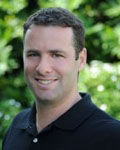 iTPA's Executive Director Dr. Mark Kovacs was interviewed on today's ParentingAces radio show and discussed fitness and injury prevention for the junior tennis player. You can listen to the hour-long recorded version at http://www.blogtalkradio.com/ur10s/2012/11/19/parenting-aces Thanks ParentingAces for the opportunity, and the great discussion on fitness for the junior tennis player. If anyone has any more questions feel free to post them! Message to the Competitive Junior, Adult or Senior Tennis Player: How to Improve Your Fitness6/10/2012 For the last two weeks during the 2012 French Open, it is obvious how physical the sport of tennis has become and will continue to increase over the coming decade. The athletes are bigger, stronger, faster and have more tennis-specific endurance. The reasons for this are rather clear. The improved quality of training:
The International Tennis Performance Association (iTPA) was established to improve the quality and consistency of training of tennis athletes at every level. The iTPA is the leader in tennis-specific performance, education and certification and is the organization for trainers, coaches and specialists who have a passion for tennis-specific performance enhancement and injury prevention. The iTPA achieves its objectives through quality evidence-based education, and the promotion of the professionals in the field who have the education, knowledge, skills and abilities to effectively train tennis athlete and improve the health, safety and performance of tennis athletes worldwide. It is important to work with a tennis coach that has gone the through the Tennis Performance Trainer (TPT) certification program which ensures that they have certain knowledge, skills and abilities in the major aspects of the physical training that can be combined with their tennis teaching and coaching knowledge. A tennis coach that has earned the TPT designation is someone that understands the basics of 14 areas needed to improve the quality of training for the tennis athlete. If your tennis coach does not currently have this designation suggest to them that they look into the TPT program (http://www.itpa-tennis.org/tpt.html). If you are working with anyone off-court with respect to training, injury prevention or rehabilitation then they should go through the Certified Tennis Performance Specialist (CTPS) certification program which is specifically designed to educate and assess the knowledge in 20 tennis-specific competencies including assessments, resistance training, tennis-specific movement, strokes and injury concerns, planning and periodization and more than a dozen other areas that are needed to effectively train the tennis athlete at any level. The CTPS program is recognized in the fitness industry by a number of organizations as an important level of education needed to successfully work with tennis athletes. If your strength and conditioning coach, personal fitness trainer, physical therapist (physio), athletic trainer or other healthcare provider does not currently have the CTPS designation you should suggest that they look into the CTPS program.
(http://www.itpa-tennis.org/ctps.html). Please continue to follow the iTPA on facebook (facebook.com/itpatennis), via twitter (@itpatennis) and at the website (www.itpa-tennis.org) for daily information about performance enhancement and injury prevention for the tennis athlete. Below is an audio interview featuring iTPA Certification Commission and renowned orthopedic surgeon Dr. Marc Safran. Dr. Safran is Professor and Associate Director of Sports Medicine at Stanford University. He is a team physician for the Stanford Teams and is the director of the sport medicine fellowship program. Dr. Safran is also the chief orthopedic consultant to the WTA. He has served as the medical director of the San Diego WTA tournament for 13 years and is the medical director of the ATP tournament in San Jose (since 2002), and has been a neutral site physician for several Davis Cup ties. In this audio clip, Dr. Safran offers tips to parents on ways to keep competitive, young tennis players healthy. A must-listen for parents! The Strong Survive and the Fittest Conquer: Entering The New World of High Level Competitive Tennis5/29/2012 Just before the start of the 2012 French Open, an article in The New York Times titled “The Strong Survive Match Point” discusses how important the physical aspects of the tennis are to success at the highest level.
Below is a quote from US Davis Cup Captain and former World no.1 who was considered the fittest player of his generation: “I certainly think these guys at the top, they have very large teams they work with,” said Jim Courier. “They have become very scientific about their sweat loss and replacing the minerals very specifically with what’s coming out of their bodies. And I think they’ve really taken the science on the legal side up to the next level, which is interesting. I think they also have gotten much better at recovery.” The important of the tennis performance specialist who is trained appropriately to work with tennis athletes and who understands how to get the most of the training aspects is paramount to success on the tennis court at any level. The one major area of improvement over the next decade is the area of recovery. Most players train less than 8 hours per day (tennis, physical etc), but have 16 hours or more to focus on recovery. This recovery is mental, physical, nutritional, emotional and requires the right environment with the correct recovery modalities from sleep, to nutrition, to massage, manipulations, adjustments, hot and/or cold treatments, acupuncture, laser and many other modalities that may help speed recovery. One of the best points in the article came from one of the best coaches over the last two decades – Paul Annacone. Coach Annacone was the coach of Pete Sampras and now Roger Federer. He emphasized the point that “Rafa is going to train totally different than Roger, and Roger will train totally different than Tsonga.” This statement cannot be overemphasized for the tennis athlete at any level – junior, collegiate, professional, adult league or senior. The training program for each athlete needs to be developed based around the strengths and weakness of the individual athlete, and some athletes need more tennis-specific endurance work, other athletes need more speed and power work, some need extra strength work, many athletes need flexibility work, while all younger athletes needs work on general athletic skills as a foundation to build upon as they age. The importance of having an individualized tennis-specific program for improving on-court performance and reducing injuries is now a requirement at the highest levels of the game. This same professionalism of training is also being seen at the collegiate and junior levels. Over the next decade this trend is only going to continue, and the need for qualified and highly skilled professionals to work in this environment is only increasing. Check out the International Tennis Performance Association: your resources for the most current evidence-based information from the leading minds in the field of tennis-specific training and the leader in education and certification of professionals who work with tennis athletes at any level www.itpa-tennis.org http://www.nytimes.com/2012/05/26/sports/tennis/26iht-srfofitness26.html?pagewanted=all Dr. Neeru Jayanthi (Director of the Tennis Medicine program at Loyola University Stritch School of Medicine and member of the ITPA Cerification Commission) provides a great review of some of his research analyzing injury risk in junior tennis players. He discusses information that he and his research team found from a series of studies looking at US Junior tennis players who play competitive sectional and national tournaments. The data provides some unique insights. Some of the areas discussed in this 5 minute video are:
Gifted young athletes are under increasing pressure to play only one sport year round. But a Loyola University Health System study of 519 junior tennis players has found that such specialization increases the risk of injury. Researchers who analyzed 3,366 matches in United States Tennis Association junior competition found that players who specialized in only tennis were more likely to withdraw from tournaments for medical reasons, typically injuries.
Also, players who had experienced an injury or tennis-related illness during the past year were 5.4 times more likely to withdraw from a tournament for medical reasons. "Parents, coaches and players should exercise caution if there is a history of prior injury," said Dr. Neeru Jayanthi, lead author of the study. "And parents should consider enrolling their children in multiple sports." Jayanthi is medical director of primary care sports medicine and an assistant professor in the departments of Family Medicine and Orthopaedic Surgery and Rehabilitation at Loyola University Chicago Stritch School of Medicine. He also is chairman of the education committee of the International Society for Tennis and Medicine Science and an ITPA Certification Commissioner. Kids who play more than one sport probably are less likely to develop injuries because they have a chance to rest from the repetitive overuse of the same muscle groups. Also, cross training in other sports such as basketball and soccer uses other large muscle groups "and may enhance their developmental and athletic skills," Jayanthi said. Players in the study began playing tennis at an average age of 6, began competing at age 9 and began to specialize at age 10. Players practiced a median of 16 to 20 hours per week, and 93 percent said they competed at least 10 months per year. The study is the latest in a series of studies Jayanthi and colleagues have conducted on injuries in young tennis players. Earlier studies found that:
Take home: This was a very revealing study performed by one of the top tennis doctors in the world and the major take home message is that young athletes need to play multiple sports to develop good overall athletic skills in many different movements and learn to compete under different sport and social environments. However, if the young athlete does have aspirations to play at the highest level at a certain point he or she will need to devote the majority of training time on improving his/her tennis skills (physical, mental, tactical and technical). The question is always at what age should this specialization occur? A general rule of thumb is during or just after puberty. However, individual differences must be understood and a big determining factor is motivation and desire for the sport. |
iTPA Blog
The leader in tennis fitness, performance, education and tennis certification. Get iTPA Certified today! Categories
All
|
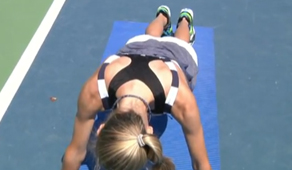
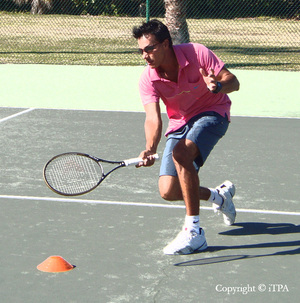
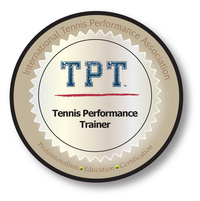
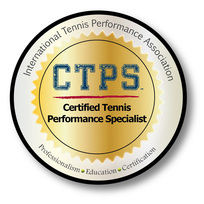
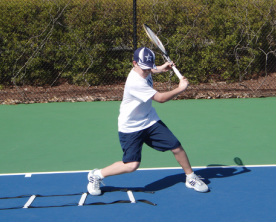
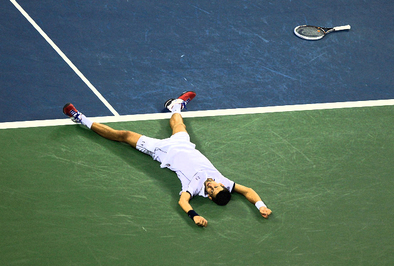
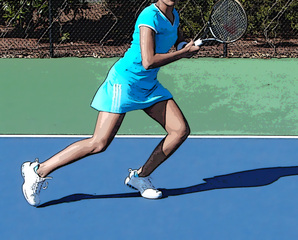




 RSS Feed
RSS Feed
